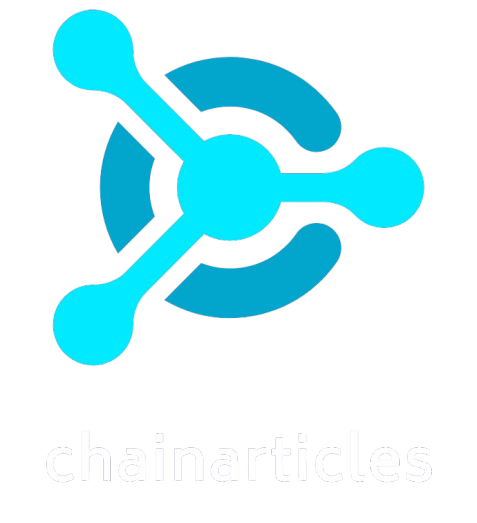Interactive Voice Response (IVR) allows callers to interact with a phone system through pre-recorded voice prompts and touch-tone selections. It’s commonly used in call centers to automate call routing and provide customers with self-service options, such as checking account balances or troubleshooting issues without speaking to an agent.
IVR levels refer to the number of menu layers a caller can navigate through.
- A single level IVR typically offers a single menu level, where callers make a choice from a set of options, such as “Press 1 for support” or “Press 2 for billing.”
- A multi level IVR, on the other hand, provides additional layers of menus, enabling more detailed routing options based on the caller’s input, like choosing from multiple departments or services.
While basic, single level IVR are usually included with modern business phone service, multi level IVR systems tend to come with an additional cost, as they require more sophisticated technology and setup to support the additional menu complexity.
If you’re facing common issues like misrouted calls, long wait times, or customer frustration with unclear menus, it may be time to upgrade your system. The following signs highlight when a multi level IVR could be the key to improving both customer experience and operational performance.
1. You notice repeat misrouted calls
Misrouted calls are a clear sign that your current system isn’t effectively meeting caller needs. When customers frequently end up in the wrong department, it not only frustrates them but also wastes valuable time for agents who must redirect the call.
A multi level IVR solves this problem by offering more granular menu options, allowing callers to self-select the most appropriate department or service. For example, instead of a single “Support” option, the IVR might offer submenus for billing, technical issues, or product returns. This level of precision ensures that calls are routed correctly the first time.
A simple IVR often falls short in these scenarios because it lacks the depth needed to handle diverse customer needs. With limited menu options, callers may default to the wrong choice or end up confused, especially if the menu doesn’t address all possible reasons for calling.
However, it’s important to ensure that frequent misrouting isn’t due to poorly worded voice prompts or outdated menu structures. Conducting regular reviews of your IVR scripts and analyzing call patterns can help confirm whether misrouted calls are a symptom of insufficient IVR levels rather than a poorly designed menu.
2. You have multiple locations or branch offices
A multi level IVR makes sense for companies with multiple locations when callers need clear guidance to reach the right destination. There are some cases where a business with multiple locations can get away with a simple IVR — I’ll call those out at the end of this section — but those looking to future-proof their VoIP phone system will be better off with the flexibility provided by multi level IVR systems.
This is especially true if customers frequently contact the wrong location, each location offers unique services, or the call center operates with limited Automatic Call Distribution (ACD) capabilities.
SEE: Learn more about ACD, IVR, and how these technologies work together.
A well-designed multi level IVR can streamline routing, reduce caller frustration, and improve overall satisfaction by making navigation intuitive.
A simple IVR is sufficient for companies with consistent offerings across locations or advanced ACD systems that can route calls seamlessly. In these cases, overcomplicating the IVR menu might frustrate callers rather than help them.
3. You offer 24/7 customer support
A simple IVR might only provide a generic after-hours message or direct callers to voicemail if there is no live agent available. A multi level IVR can offer tailored options that guide callers to self-service resources or provide detailed information based on their needs. This is much less expensive than call center outsourcing to provide service at all hours — and sometimes it is all the extra help customers really need.
For example, a multi level IVR can include specific submenus for billing, technical support, or appointment scheduling, each offering pre-recorded answers to common questions. Callers seeking billing information might hear automated instructions on how to make a payment online, while those with technical issues could be directed to a troubleshooting guide.
This additional functionality ensures that callers still receive meaningful assistance, reducing the likelihood of abandoned calls or frustration, even outside business hours. A simple IVR system cannot provide this level of guidance or support to customers.
4. You have language-diverse customers
A multi level IVR creates a seamless and inclusive experience for callers with diverse language needs. Unlike a simple IVR, which might only offer a primary language or a generic prompt to select a secondary option, a multi level IVR can provide tailored menus for each language from the outset, guiding callers through a fully customized journey in their preferred language.
For example, after selecting their language at the first menu level, callers can access additional submenus specific to their needs — such as billing, support, or account services — all in the same language. This ensures they don’t face confusing transitions or mismatched options. It can also improve the clarity and accuracy of call routing, as agents are connected to callers with the right context, such as knowing their preferred language in advance.
This tailored approach enhances customer satisfaction and helps businesses build trust and loyalty in multilingual markets.
5. You’re looking to provide efficient self-service options
Callers with simple requests don’t want to wait on hold for minutes to accomplish a quick task. These types of calls are a drain on resources and take up valuable agent time as well.
If your team is constantly managing routine tasks like updating contact information, processing payments, or scheduling appointments, a multi level IVR can offer self-service options that enable callers to handle these tasks themselves.
Here are a few self-service offerings that can easily be set up with a multi level IVR:
- Account updates: Allow callers to change contact information or update payment methods securely.
- Payments: The IVR can take payments directly, allowing customers to pay at any time and reducing the load on agents processing payments.
- Order status: With access to real-time data, the system can provide callers with up-to-date information on their orders without needing to speak to an agent.
A multi level IVR system can use information from your company’s database to manage various tasks, allowing for efficient self-service options that enhance the customer experience and reduce excessive call routing for your team.
6. You are seeing high call abandonment rates
High rates of caller abandonment often signal that your IVR isn’t providing the clarity or efficiency customers expect. Long wait times, confusing options, or an inability to resolve simple inquiries can cause callers to hang up before reaching an agent.
A multi level IVR addresses these issues by offering detailed, easy-to-follow menus that guide callers directly to the right team or self-service options. For example, customers checking an account balance or paying a bill can complete their tasks without needing to wait for an agent, reducing abandonment caused by unnecessary delays.
A simple IVR might exacerbate abandonment issues if it fails to provide clear paths for common inquiries or forces callers to navigate vague or overly broad options.
High call abandonment rates can happen for reasons unrelated to your IVR. It’s one of those call center metrics that’s important, but doesn’t tell you much without context. You can use IVR analytics to compare abandonment rates to agent availability metrics if you wanted to rule this out.
7. You have high wait times and overwhelmed agents
If call queue times are starting to grate on customers and call center agents are burning out, it can be a sign that your IVR is not shouldering enough of the load as well as it could be. Now, there are lots of ways to manage high call center queuing times, but perhaps none has more of an impact as quickly as implementing an elegant multi level IVR.
You can provide customers a more sophisticated menu that allows callers to get to the right department without agent intervention. Additionally, you can increase the number of self-service options available to customers, such as checking an account balance or order status.
Multi level IVRs can also offer call-waiting features like estimated wait times or queue callback options to keep customers happy. You will also get more control over on-hold messages, which can direct callers to online help resources that might be able to answer the question they have.
There is just a lot more you can do to improve call flows with a multi level IVR that shortens wait times for callers and takes the strain off your agents.




